I am fortunate to have recently participated in a guided walk, with 12 other Australians, which followed part of the Shikoku pilgrimage route that covers a circuit of 88 temples where Buddhist priest Kobo Daishi is believed to have spent time in the 9th century. The Shikoku pilgrimage is about 1200 km-long by foot and forms a circuit around the island with temples in widely varying landscapes from the coast to ancient forests in mountains, to towns and small cities.
We started at Koyasan on the mainland in Wakayama prefecture because this is a centre of teaching Shingon Buddhism, which was founded by Kobo Daishi in the remote mountains on land granted by Emperor Saga in the year 816. Koyasan was registered as a UNESCO World Heritage Site in 2004 as part of the ‘sacred sites and pilgrimage routes in the Kii Mountain range and the cultural landscapes that surround them.’ Koyasan is a village nestled in a small elevated forest valley with numerous immaculately preserved temple buildings, a museum and an ancient cemetery that includes the Mausoleum of Kobo Daishi. Seemingly worlds away from nearby urban Japan, Koyasan is very popular for Japanese and foreign visitors to experience temple architecture, monastery life, food and ceremonies.
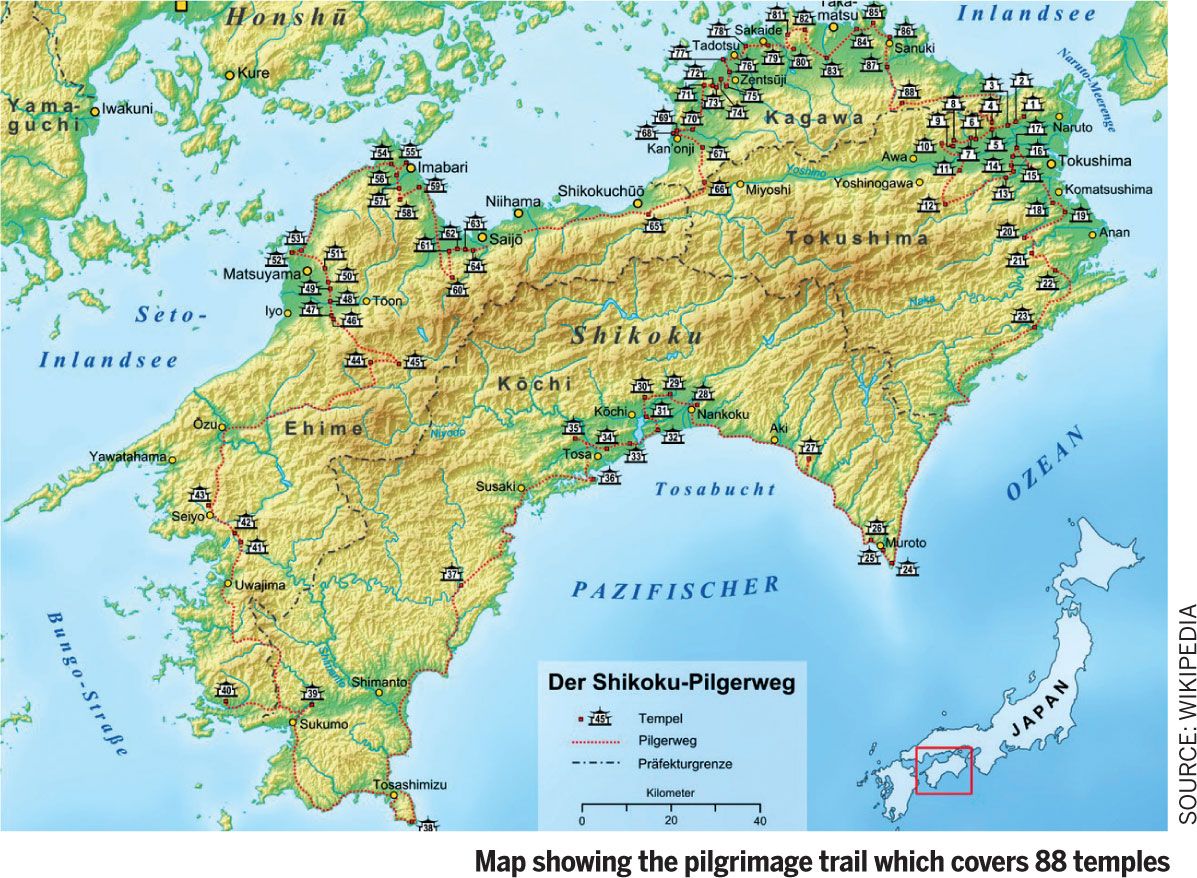
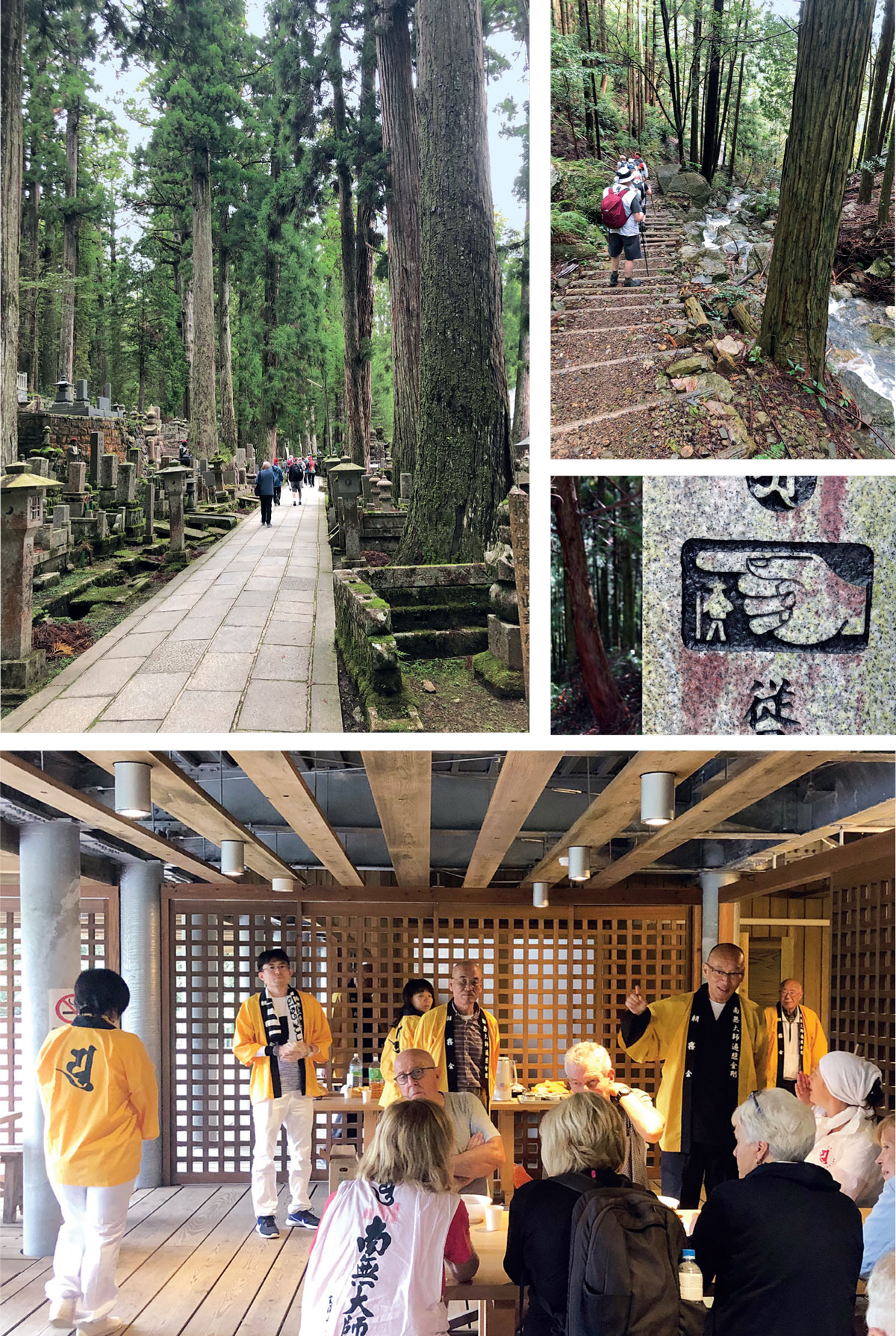
Top Right & Middle: Pilgrim paths on Shikoko island are marked between temples on the circuit and the trail includes forests, farmland and villages
Bottom: Temple communities and villagers welcome visitors
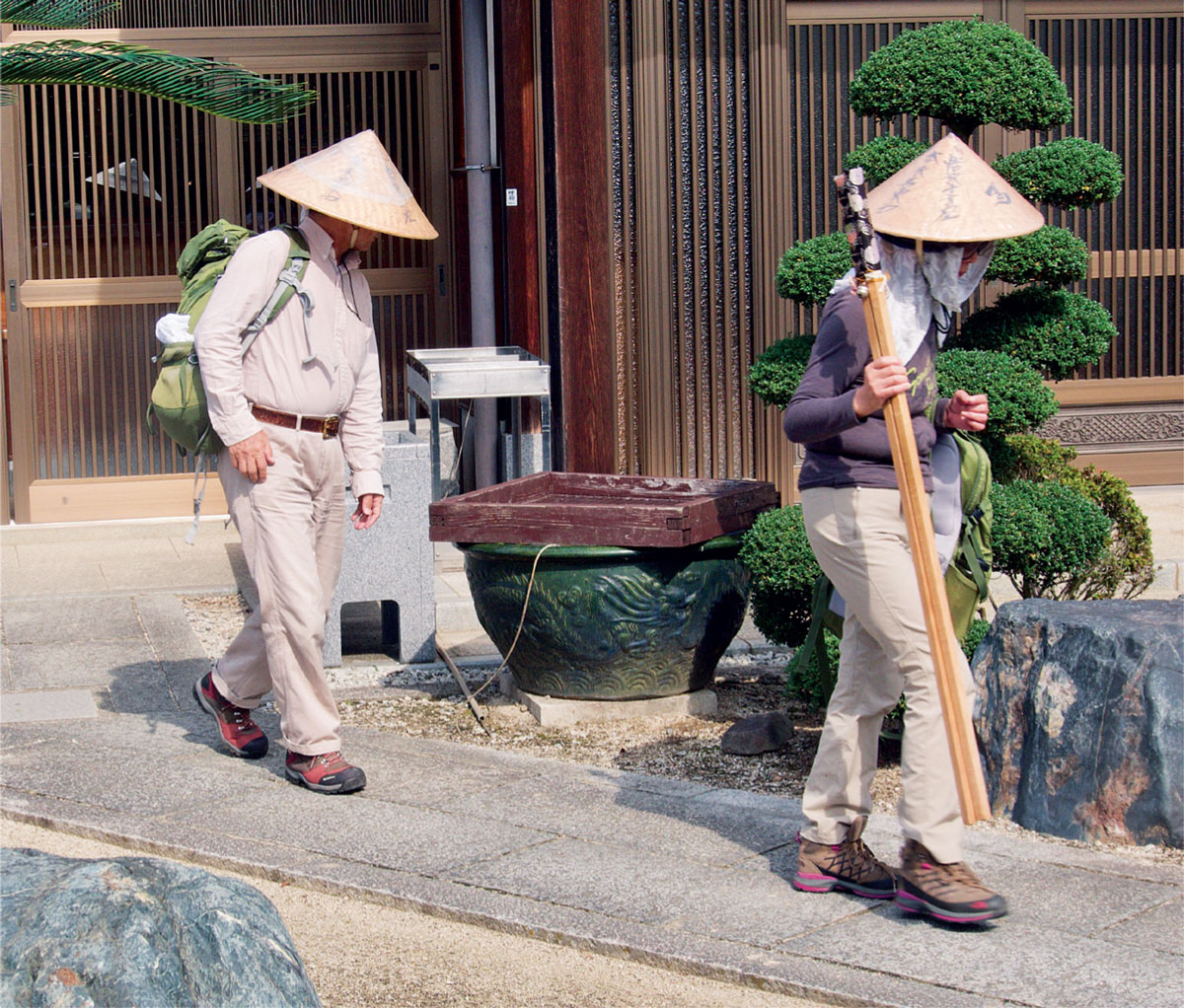
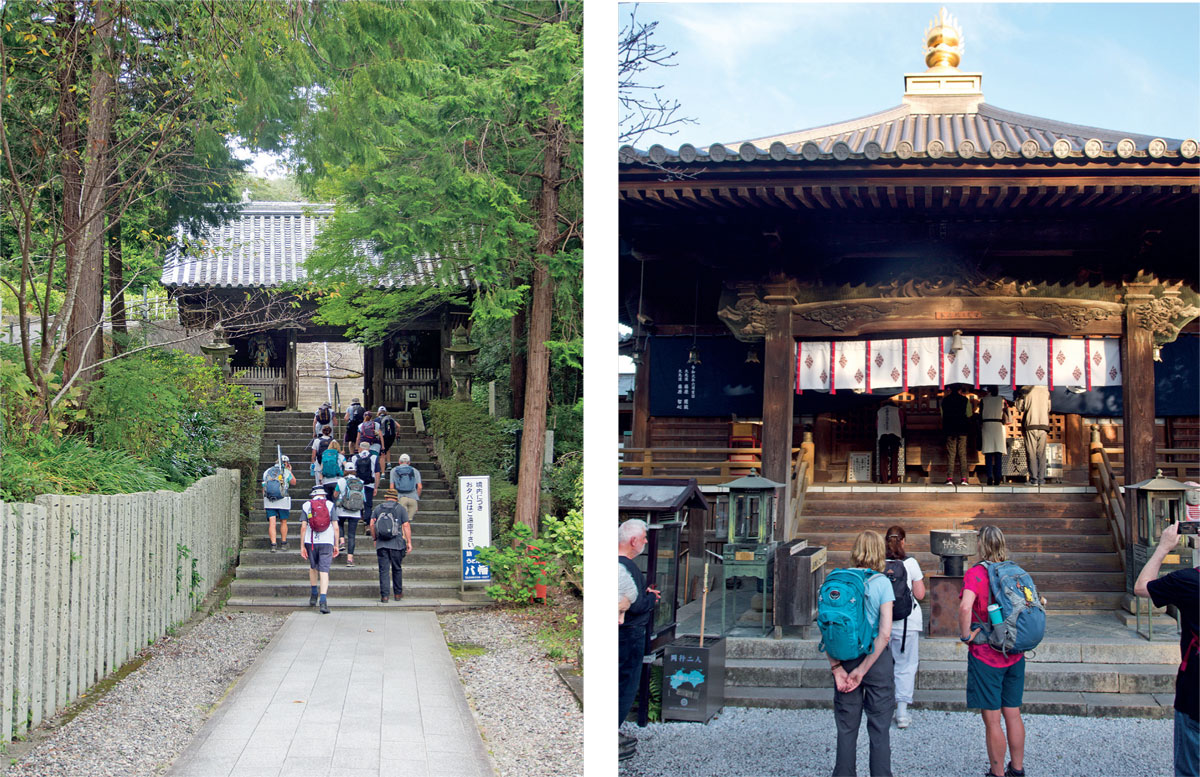
Right: The Main Hall
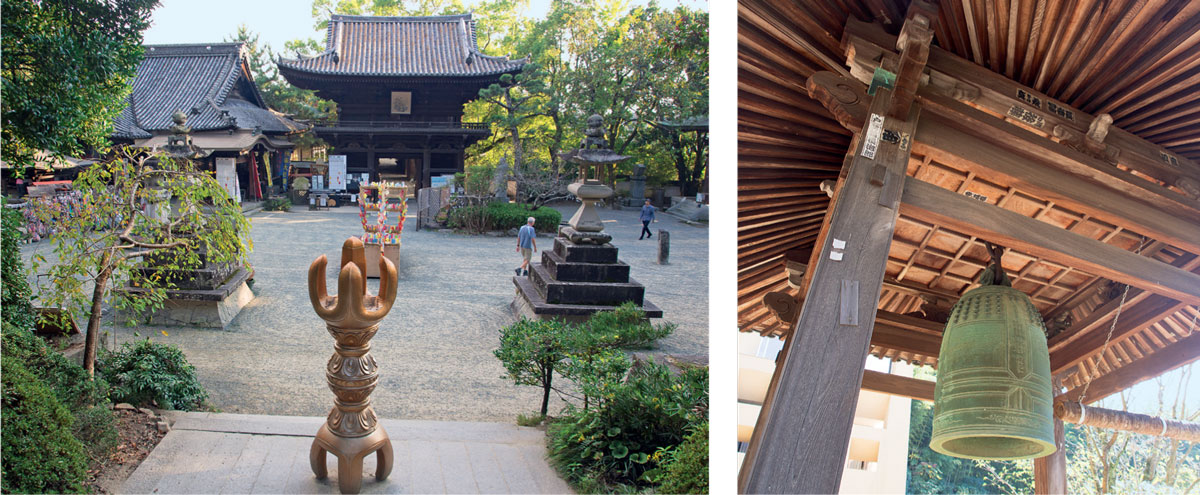
Right: A bell tower
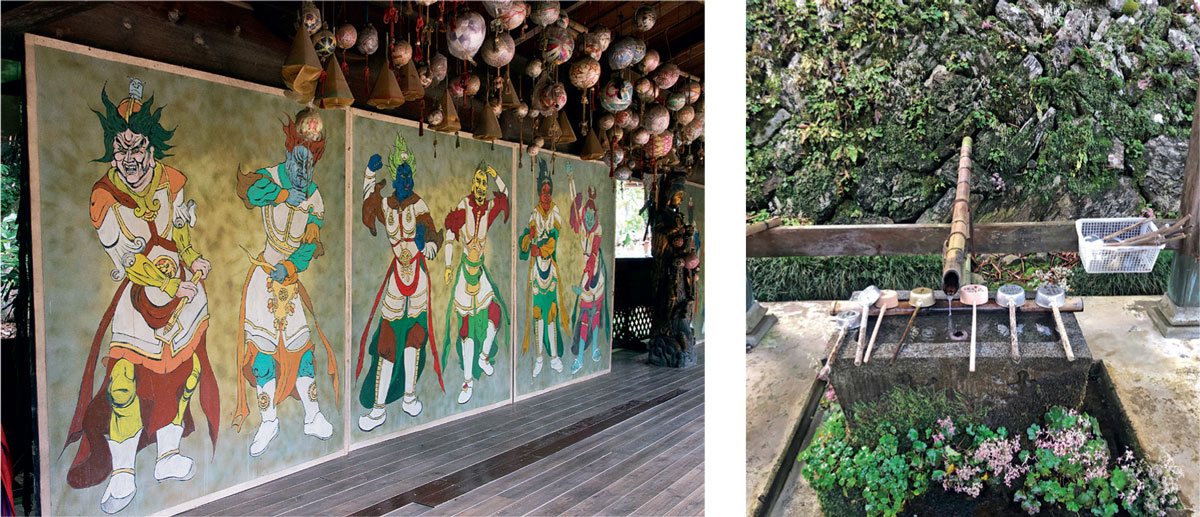
Right: A wash basin
We then moved by ferry to Tokushima on Shikoku Island to begin our exploration of its pilgrimage route that is well-known and walked by Buddhists since the 16th or 17th century.
We saw pilgrims walking, cycling and travelling by taxi, train, bus and car. Some were devout Buddhists, while others were just enjoying the journey, the exercise and time out for reflection.
Along the route, locals in villages, on public transport and at temples were always friendly and enthusiastic in their encouragement despite our limited ability to communicate in Japanese.
We learned to observe the etiquette of visiting these temples: bowing at the main gate, the ceremonial washing of hands at the wash basin and then one member of the group ringing the ceremonial bell before visiting the Main Hall and Daishi Hall to listen to chanting. Before leaving, we had our temple books stamped and signed.
Each temple had a different and special landscape setting, group of buildings, temple decorations, gardens and memorials to explore. Thus, even after 14 days of walking and visiting almost 30 temples in three prefectures, we were constantly surprised and delighted by the experience; it was easy to disconnect from world events or life at home on another continent.
Ancient Japan and its culture still exist in a modern highly urbanised country if you can take the time and make the effort to find it!


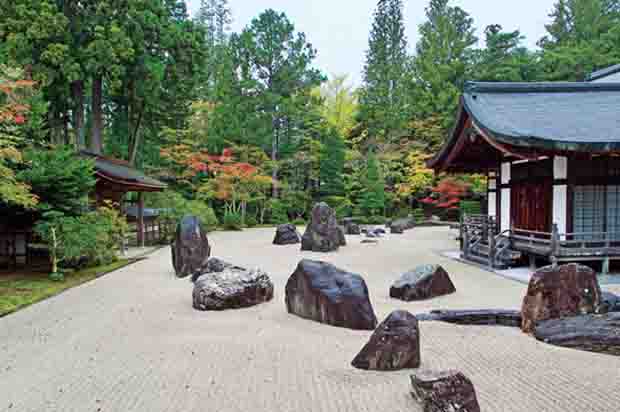

Comments (0)